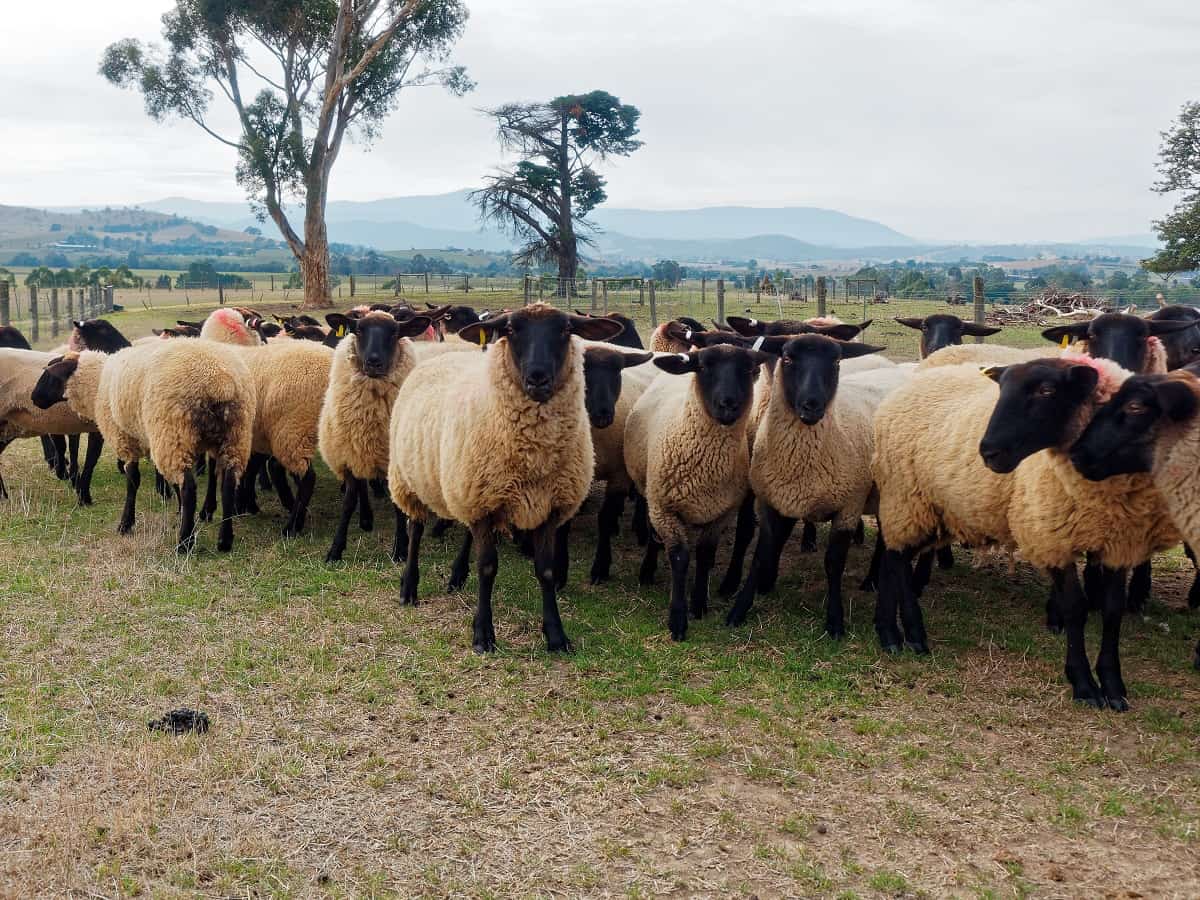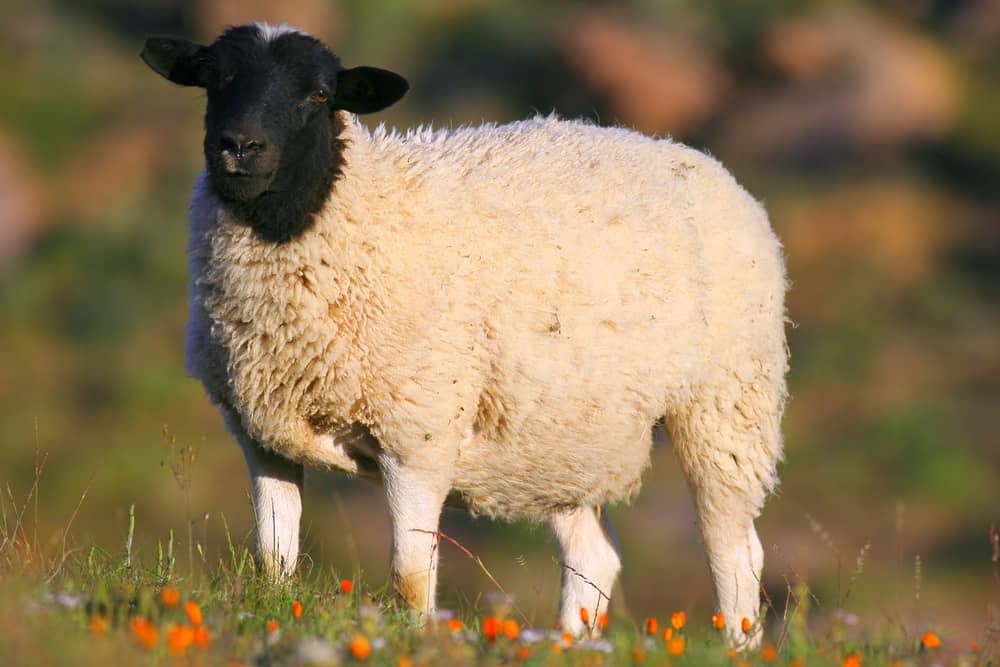
When contemplating sheep raising, you’ll almost certainly be presented with a variety of options.
Will you keep your sheep in a penned or barn? Will they be raised solely for meat, wool, or milk (or a combination of the three)? How many sheep would you want?
What kind of sheep will you raise? Let’s not forget the most important question of all.
Dorper sheep are one of the sheep breeds you may want to consider, despite their lack of popularity. This is what you need to know about the breed before you adopt it.
What is the Dorper Sheep Breed?
The Dorper sheep was created by combining the Blackhead Persian and the Dorset Horn to create a South African-bred breed.
The Dorper was developed as an effort by the South African Department of Agriculture to develop a breed of meat sheep that would be more tolerable of the area’s dry climate, unlike many other breeds of sheep, which were developed by farmers and shepherds to create a breed more suitable for their individual purposes.
In the 1930s, the Dorper was first developed. With the establishment of the Dorper Sheep Breeders Society in 1950, it quickly rose to prominence. It is a mix of the names of the two parent breeds, “Dor”set and “Per”sian, and it is amusing and distinctive.
The Dorper sheep breed is without a doubt one of South Africa’s most popular. This meat breed, on the other hand, is now farmed in a variety of locations. It is a fast-growing sheep that sheds its hair and wool early in the summer and is simple to care for. It has a light mixed coat of hair and wool.
Reasons to Raise a Dorper

1. Mutton Production
Dorper sheep are mainly farmed for mutton (rather than solely lamb), which makes them unusual. Shepherds with a little experience are frequently able to have multiple rounds of lamb each year because they have a long breeding season. When it comes to meat production, the Dorper breed is one of the most cost-effective.
Furthermore, these sheep gain a lot of weight. Every day, they may gain up to a quarter-pound in weight.
They aren’t the most sheep in terms of size, but they taste fantastic. Raising Dorpers primarily on grass will give you the greatest results. Not only does it improve the flavor and juiciness of the meat, but it is also recommended for management reasons.
Dorpers on grain are not necessary. It isn’t only expensive, but it will also make them overweight.
Dorper lambs grow quickly and have a high weaning weight. By the time they reach four months old, they usually weigh in at around 80 pounds.
2. Long Breeding Season
Some sheep breeds, such as the Icelandics, are more or less seasonal in their availability. Breeding is limited to specific months of the year as a result. Unfortunately, Dorper sheep are not in the same boat.
In contrast, Dorper sheep may lamb up to three times every two years, with a 2-year period between each lambing. Dorpers have a reputation for being prolific and motherly.
3. Early Maturation
Dorper lambs mature quickly, and most producers sell them around four months of age (though some wait longer to get that mutton-quality meat). As I previously said, they reach maturity fast.
Dorper sheep are more efficient grazers, not only putting on weight faster. Dorpers thrive on pasture, not grain, and can graze as early as three months old.
They’re also some of the most valuable lambs you can produce. Because weaners of Dorper sheep are less efficient to feed than lactating ewes, this lowers your shepherd’s expenses, since you must feed a lactating ewe and a lamb individually.
Rams also mature sexually quickly, typically being able to breed around 5 months after birth.
4. Hardiness
All sorts of grazing conditions and climates are suited to Dorper sheep. These sheep are now raised all across the globe, despite their origins in hot, arid regions. When other sheep are unable to find food, they may feed and thrive in a variety of range and feeding situations.
In addition to having a hair and wool mix that is simple to care for during the summer, they also have really thick skin. Dorper sheep need this skin because it helps them withstand both warm and cold climatic conditions. It is also valuable as a commodity in its own right. Dorper skin, in particular, is a highly coveted sheepskin.
Dorper sheep can be raised on ordinary pasture, although they will also eat browse, much like goats. This allows them to be reared on less-than-ideal pastures where other sheep types may reject.
5. Minimal Shearing Needs
It is not difficult to care for Dorper sheep because the wool and hair in this breed are mixed. The hair and wool will simply shed themselves at the conclusion of each spring if you’d prefer not to shear them.
It’s worth noting that not all Dorper sheep have the same shedding capabilities. You may need to do some investigation to confirm if this trait is genetic in your flock if you are interested in it. Almost all Dorper sheep will shed around their head, legs, belly, and other high-need areas. Some generations and populations shed better than others.
Drawbacks of the Dorper Sheep Breed

1. Singleton Births
Although Dorper ewes are known for their ability to lamb several times per year and are not seasonally limited, they, unfortunately, tend to drop only one lamb at a time. These lambs tend to be healthy, self-sufficient, and fast-growing.
However, if you’re hoping to raise ewes that will drop twins, triplets, or even quadruplets each time they lamb, then this breed is not for you.
2. Fat Percentages
You do need to be careful about what you feed your Dorper sheep. They prefer to be raised on mostly roughage – avoid overdoing it on the grain. Whenever possible, you’ll produce higher quality meat if you’re able to raise your Dorpers on pasture or browse. Excess grain leads to fatty meat.
3. Not the Best for Wool or Milk
The fiber-rich Dorper sheep is not a breed that you’ll appreciate for its hair, despite the fact that there are several hair sheep breeds. While breeding Dorper sheep with woolier breeds might assist you develop this attribute if you desire, it can’t be spun in the majority of circumstances.
The downside, however, is that Dorper sheep leather is of considerably higher quality. It has a wool breed’s finer, tighter grain.
Dorpers aren’t particularly good at producing milk, since they only give birth to one lamb at a time. If you want to use these sheep as dairy animals, you may certainly do so, but milk production is best with East Friesians or Laucaunes.

Dorper sheep can be raised in a variety of climates, although they are more suited to warm, dry climates than other breeds. Farmers in New York, for example, claim to have successfully raised Dorpers at temperatures as low as zero degrees. These sheep are excellent mutton producers and can survive in most climates.